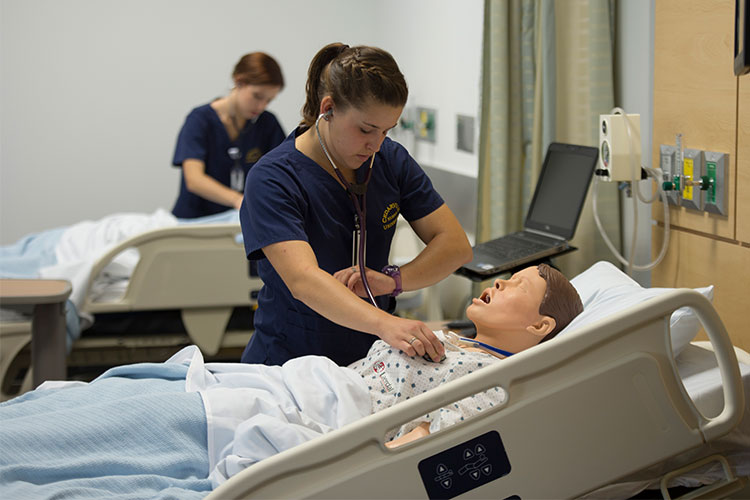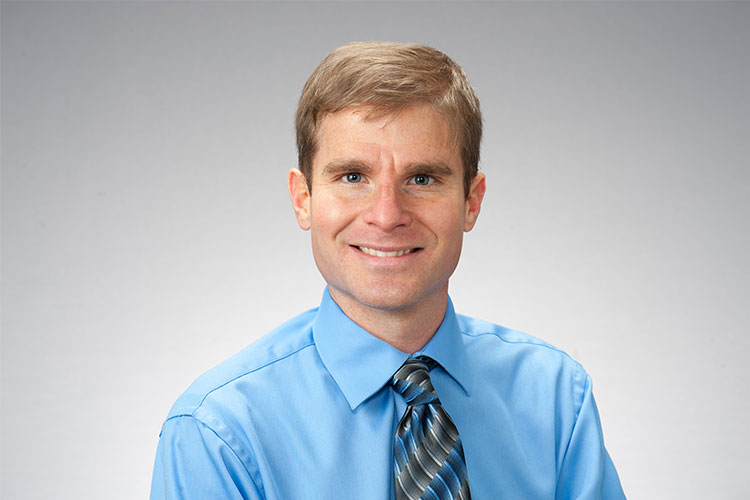A public health crisis reminds us just how important medical education is. From research to residencies, here’s how two institutions are achieving their mission in the midst of a pandemic.
By: Ben Niebauer, RA, LEED AP BD+C // Associate Principal, Education Market Leader and John Ryan, AIA, LEED AP // Associate Principal, Project Architect
Educational institutions are grappling with the impact of the pandemic and the rapid response needed to confront an unknown future. As classrooms (temporarily, if not longer) become more virtual, what are the potential ramifications for pedagogy, classroom space and the built environment?
To better understand how the pandemic is affecting pedagogy and research, DesignGroup interviewed Anthony St. Leger, Assistant Professor in the Departments of Ophthalmology and Immunology in the University of Pittsburgh School of Medicine and Dr. Kathie Williamson, President and Academic Dean of Mount Carmel College of Nursing in Columbus, Ohio. We were impressed with the creative energy and focus they’ve bringing to this challenge. They told us hope is not lost. They’re working hard to ensure students and researchers alike stay focused.
Describe your work, before the pandemic.
Anthony St. Leger (ASL): Pre-pandemic, you'd see a lot of faculty members throughout the day, and that’s where a lot of collaboration forms. Randomly, you would see someone at the end of a day or week and start discussing a project—that’s where a lot of useful ideas begin. In relation to students and trainees, I would be in the lab and we would discuss projects every day. We would talk about why they are doing certain experiments, what they expect to see in the experiment and different ways to analyze the data.
Given the intensity and rigor of medical education and research, when the pandemic hit, you couldn’t just pack up your bag and shut everything down. What was required?
ASL: Before we shut down, we were actively pursuing a couple projects, both using mice. One project looks at the ocular microbiome. The other studies corneal nerves. We basically had to shut most of our research down because it wasn’t essential at that moment. The most important research was geared toward COVID-19. Our focus was making sure the public stayed safe, instead of having a bunch of researchers going back and forth on public transportation and risking exposure and transmission of the virus. [But we needed research to continue in some capacity.] So on a weekly basis, we go in and make sure our mouse colony was properly maintained. Also, we have decades-old samples in various freezers throughout the department, so we would need to make sure all the freezers were functioning properly to ensure that our samples were not compromised. The whole process takes a little bit of time and a lot of organization.
Kathie Williamson (KW): We had three days of faculty development in March to give faculty practice for moving to an online environment. We had an instructional designer and our own faculty who already taught online serve as mentors to the other faculty. They worked with each faculty member, one-on-one, to ensure the quality of educational content and instruction. We asked faculty if they were comfortable coming to the building and working in their offices, so they had the support of everyone around them, rather than trying to figure it out at home by themselves. We also asked them to record everything.

What are your plans for re-starting?
KW: We are going to maintain both online and in-person education this fall. We figured out how to do remote testing and proctoring as well, so no students are having to come back for that reason. But we will start bringing folks back for simulation and we are working with our clinical partners to bring them back into clinical practices.
Some sites, however, have more vulnerable populations — like mental health and pediatrics – that cannot yet receive students on clinical rotations. So we’re finding alternatives. We’re working with our local Health Department to help them with things like contact tracing to give students a different experience that still meets our program outcomes. Our science courses have really opened the door for online learning.
ASL: We have re-opened and things are starting to move forward. We’re working in shifts now, just to make sure we don’t reach too high a personnel density within the lab. Enough that we can socially distance at all times and make sure there isn’t a lot of crowding. We wear masks all the time. And we have a very large supply of Clorox wipes. Those are pretty critical.
Thinking in hindsight, what has been the biggest benefit or opportunity from the shut down?
ASL: It allowed me to focus on grant and manuscript writing. Those are some of the toughest things to do as an early career scientist. We are trained to keep doing experiments and make a perfectly coherent story; however, when you shut down for three months, you realize you can’t have that perfect paper. You still have a story that’s worth telling, so you focus on getting that submitted. It’s allowed me to stop and focus on doing some writing instead of experimental work and other administrative stuff.
KW: We found in many cases students were so much more interactive in the online environment because the faculty were forced to be more engaging. Attendance has actually increased, and our students are still meeting or exceeding our benchmark thresholds. So it could be that the extenuating circumstances of COVID-19 have allowed faculty to think more deeply about their pedagogy and how they are using technology.

What would be the worst thing about the pandemic, other than shutting down?
ASL: The lack of regular interaction with people has been the worst thing for productivity. When you talk to other faculty members or present data, you get useful feedback from people all the time. When you don’t see those people for a while, you don’t get that feedback — or don’t have that informal conversation that could lead to something bigger. There’s a lot of physical interaction that needs to happen to develop a project.
KW: I can teach students how to draw blood (even remotely) but some experiences cannot be simulated. Reducing or eliminating clinical experiences cannot happen.

Moving forward, what are the biggest risks from the pandemic? Do you feel this fundamentally changes the nature of your work?
ASL: Trying to maximize progress while also making sure we are responsible citizens is the toughest part. We don’t want to spread the virus, so for now, we must be smart about our interactions and working schedules. It’s difficult trying to envision when we can get back to a sense of normalcy. You know, when is it okay to have a meeting in person again? Or, when is it okay to have informal conversations again? We have to wait and see.
KW: Faculty have to get students to think critically. While we are missing some hands-on experiences, we can still get our students to think through scenarios and case studies. Nursing students sign up for face-to-face interactions. We have to find a way to make non-clinical education more engaging while simultaneously bring back clinical learning.
Our Interviewees:

Anthony St. Leger, Assistant Professor in the Departments of Ophthalmology and Immunology // University of Pittsburgh School of Medicine

Dr. Kathie Williamson, President and Academic Dean // Mount Carmel College of Nursing
Our Interviewers:

Ben Niebauer, RA, LEED AP BD+C // Associate Principal, Education Market Leader
Ben leads DesignGroup’s education practice. He has focused his 18 year career on exceptional design and planning for academic facilities. Ben has significant experience designing student centered environments including health science facilities, laboratories, over 5,500 student housing beds, and has assessed and planned 30 million square feet of higher education campuses. Ben is an active participant with the Society of College and University Planners.

John Ryan, AIA, LEED AP // Associate Principal, Project Architect
John practices architecture as a collaborative process, engaging with the client, user groups, stakeholders and other project partners to discover the project solution. His experience includes a range of building types, including civic, healthcare, higher education and commercial projects. Common to each of these projects is the use of design as a tool for engagement, conversation and problem solving for the entire design team. John’s interest in wellness design stems from his interests in environmental and social sustainability, and his belief that design can yield powerful results for the integration of built and natural environments, as well as strengthen the social fabric of our cities and communities.
